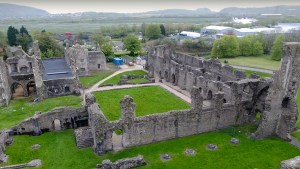Archaeologists are converging in the small Welsh town of Haverfordwest, where artifacts and remains dating back to the 14th century have been discovered. Experts hope the excavation will reveal the location of St. Saviour’s, a long lost Dominican friary.
Western Telegraph reports that the discovery began when 17 bodies were exhumed during a redevelopment project. The bodies were buried in shrouds with their arms crossed over their chests. They have since been removed for a formal analysis.
Haverfordwest’s revitalization effort is expected to help the town draw tourism and sports revenues, but for now it’s been placed on hold. In the meantime, the Dyfed Archaeological Trust has been called in to examine the site.
Medieval history
Dyfed’s head, Fran Murphy, said she was confident that they are close to the site of the friary, based on historical records:
“We know it’s there because of a series of monastic references, mainly records about money,” Fran told the Western Telegraph, adding, “It was dissolved in the 1530s with one of the friars scrubbing his name from the list of friars at the priory, which is peculiar and might have been a protest to it closing.”
Murphy noted that there is still evidence of the friary’s presence in town, with street names like “Friary Road.” Furthermore, historical documents indicate that there were eight friars living in the friary prior to its closing. The monastic house was eventually shuttered during the Dissolution of Monasteries in the 16th century.
The team has already discovered the remains of the town’s 19th-century iron foundry and evidence of St. Saviour’s cemetery, but there has been no sign of the remains of the friary as of yet. According to Wales Online the archaeological investigation will last for 18 months.
Murphy hailed the promising historical value of the medieval Welsh site:
[This] will tell us so much about the continuous development of this thriving town through the ages, and its vital connection with the Western Cleddau River.” Murphy added, “It will give us insights into how people lived and died, their occupations, what they ate and drank even, and prove a valuable source of information for years to come.”


